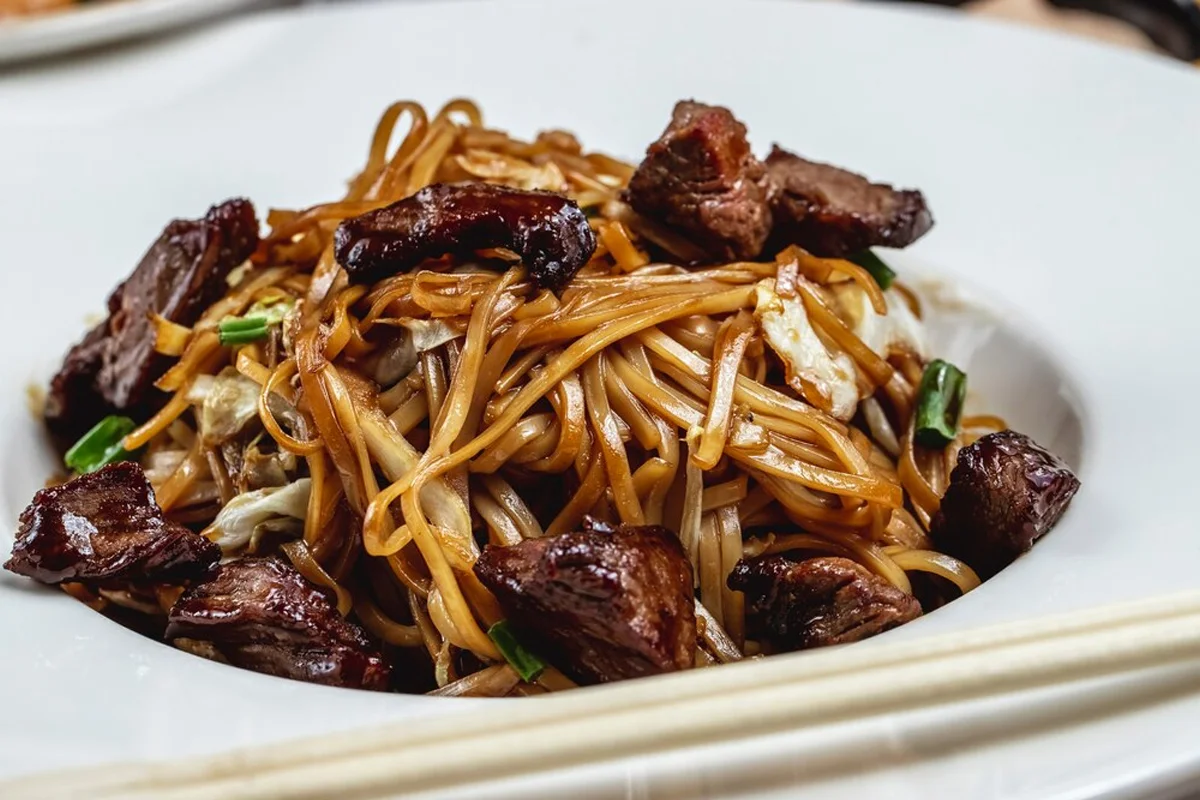Vietnamese cuisine has a knack for weaving together bold, aromatic flavors with a sense of comfort that warms both the heart and soul. Bò Kho, or Vietnamese beef stew, is a quintessential example. This hearty dish combines tender chunks of beef simmered in a richly spiced broth with a fragrant medley of lemongrass, star anise, and cinnamon. Pair it with soft, chewy egg noodles, and you’ve got a match made in culinary heaven.
In this article, we’ll take a deep dive into the origins and preparation of Bò Kho, explore the ingredients that make it unique, and guide you through the perfect pairing with egg noodles. Let’s embark on this flavorful journey!
Introduction to Vietnamese Beef Stew
Origins and Cultural Significance of Bò Kho
Bò Kho holds a special place in Vietnamese cuisine, often enjoyed as a hearty breakfast or a fulfilling dinner. The dish reflects Vietnam’s rich culinary history, influenced by Chinese and French cooking techniques. The name itself, “Bò” meaning beef, and “Kho” meaning braised or stewed, hints at its humble yet flavorful roots.
Traditionally, Bò Kho was a farmer’s meal, packed with proteins and warming spices to sustain long days in the field. Over time, it has transcended its origins, becoming a beloved staple in Vietnamese households and restaurants worldwide. The stew is not just food—it’s a story of Vietnam’s love for simplicity and flavor.
Variations Across Regions
Like many Vietnamese dishes, Bò Kho changes slightly depending on where you taste it. In the southern regions, the broth leans sweeter, often incorporating coconut water to balance the spices. Meanwhile, northern variations are more robust, with a focus on savory and spicy elements. Central Vietnam’s take tends to be punchier, with a pronounced heat from added chili.
No matter the variation, the essence of Bò Kho remains the same—a deeply aromatic beef stew that’s sure to comfort and delight.
Understanding the Key Ingredients
Essential Spices and Aromatics
Crafting an authentic beef stew with egg noodle noodle Viet hinges on a symphony of spices and aromatics. Lemongrass, with its citrusy notes, forms the backbone of the stew’s fragrance. Star anise and cinnamon introduce warm, sweet undertones, while ginger and garlic add depth and zest. This harmonious blend creates the stew’s signature aroma, making each spoonful a sensory delight.
Choosing the Right Cut of Beef
Selecting the appropriate beef cut is crucial for achieving tender, flavorful bites. Cuts like beef brisket or chuck are ideal due to their balance of meat and connective tissue. When simmered slowly, these cuts break down beautifully, resulting in succulent pieces that melt in your mouth. Opting for well-marbled meat ensures richness in every bite, enhancing the overall indulgence of the stew.
The Role of Fish Sauce in Depth of Flavor
Fish sauce, a staple in Vietnamese cooking, elevates the umami quotient of the stew. Its salty, savory essence deepens the broth’s complexity, intertwining with the spices to produce a well-rounded flavor profile. Incorporating fish sauce not only seasons the stew but also imparts an authentic Vietnamese character, distinguishing it from other beef stews.
Preparing Vietnamese Beef Stew
Step-by-Step Cooking Instructions
Embarking on the journey of preparing bò kho involves several key steps:
- Marinating the Beef: Combine cubed beef with minced garlic, ginger, lemongrass, star anise, cinnamon, and a splash of fish sauce. Allow it to marinate for at least an hour, enabling the flavors to penetrate deeply.
- Searing the Meat: In a hot pot, sear the marinated beef until browned on all sides. This process locks in juices and builds a flavorful foundation.
- Building the Broth: Add beef broth to the pot, scraping up any browned bits stuck to the bottom. Introduce additional aromatics like lemongrass stalks and star anise. Bring to a boil, then reduce to a simmer.
- Simmering: Cover and let the stew simmer gently for 1.5 to 2 hours, or until the beef reaches desired tenderness. Occasionally skim off any impurities that rise to the surface to maintain a clear broth.
- Adjusting Seasonings: Taste the broth and adjust with fish sauce or a pinch of sugar to balance flavors. For added heat, consider incorporating chili paste or fresh chilies.
- Final Touches: Add carrots during the last 30 minutes of cooking, allowing them to soften without disintegrating. Just before serving, garnish with fresh herbs like cilantro and Thai basil to introduce a burst of freshness.
Tips for Achieving the Perfect Consistency
Achieving the ideal consistency in bò kho is a balancing act. The broth should be hearty yet not overly thick. To thicken, consider simmering uncovered to reduce the liquid or introducing a slurry of cornstarch and water. Conversely, if the stew becomes too thick, adjust by adding additional broth or water. Maintaining a gentle simmer prevents the beef from becoming tough, ensuring a tender, melt-in-your-mouth experience.
Common Mistakes to Avoid
Avoiding common pitfalls can elevate your bò kho:
- Overcooking the Beef: Excessive cooking can lead to dry, tough meat. Monitor the simmering time closely to achieve optimal tenderness.
- Neglecting to Marinate: Skipping the marination step can result in a less flavorful stew. Allowing time for the beef to absorb the spices is essential for depth of flavor.
- Imbalanced Seasoning: Overuse of fish sauce or spices can overpower the dish. Season gradually, tasting as you go, to achieve a harmonious balance.
By adhering to these guidelines and techniques, you’ll be well on your way to mastering the art of preparing authentic Vietnamese beef stew with egg noodles, a dish that embodies the rich culinary heritage of Vietnam.
Pairing Bò Kho with Egg Noodles
Selecting the Ideal Egg Noodles
Choosing the right egg noodles is essential to complement the rich flavors of bò kho. Opt for fresh, medium-width egg noodles, known for their slightly chewy texture and ability to absorb the stew’s aromatic broth. These noodles provide a satisfying bite that pairs well with the tender beef and hearty vegetables. If fresh noodles are unavailable, dried egg noodles can serve as a suitable alternative; just be sure to cook them until al dente to maintain the desired texture.
Properly Cooking and Serving the Noodles
To achieve the perfect noodle consistency:
- Boil Water: Bring a large pot of water to a rolling boil.
- Cook Noodles: Add the egg noodles, stirring gently to prevent sticking. Cook according to package instructions, typically 3-5 minutes for fresh noodles or 7-9 minutes for dried, until al dente.
- Drain and Rinse: Drain the noodles in a colander and rinse briefly under cold running water to halt the cooking process and remove excess starch.
- Portion and Serve: Divide the noodles into individual serving bowls. Ladle the hot bò kho over the noodles, ensuring each bowl receives a generous amount of beef, vegetables, and broth.
Garnish with fresh herbs such as Thai basil, cilantro, and a squeeze of lime to enhance the dish’s vibrant flavors.
Enhancing the Dish with Fresh Herbs and Condiments
In Vietnamese cuisine, fresh herbs and condiments play a pivotal role in elevating a dish. For bò kho, consider the following accompaniments:
- Thai Basil: Imparts a sweet, anise-like flavor that complements the stew’s spices.
- Cilantro: Adds a fresh, citrusy note, balancing the richness of the broth.
- Bean Sprouts: Provide a crisp texture contrast, enhancing the overall mouthfeel.
- Lime Wedges: A squeeze of lime juice introduces a tangy brightness that cuts through the stew’s depth.
- Chili Slices or Sriracha: For those who prefer extra heat, adding fresh chili slices or a drizzle of Sriracha can intensify the spiciness to your liking.
Serving bò kho with egg noodles and these fresh accompaniments creates a harmonious balance of flavors and textures, making each bite a delightful experience.
Frequently Asked Questions
What is the difference between Bò Kho and Phở?
While both are beloved Vietnamese beef-based dishes, bò kho and phở differ significantly in preparation and flavor profiles. Phở features a clear, aromatic broth seasoned with star anise, cloves, and cinnamon, served with rice noodles and thinly sliced beef. In contrast, bò kho is a hearty, spiced beef stew enriched with lemongrass, star anise, and curry powder, often served with egg noodles or baguette. The former offers a lighter, more delicate taste, whereas the latter provides a robust, warming experience.
Can I make Bò Kho in advance?
Absolutely! In fact, preparing bò kho ahead enhances its flavors as the ingredients have time to meld. After cooking, allow the stew to cool to room temperature, then refrigerate in an airtight container for up to 3 days. When ready to serve, gently reheat over low heat until warmed through. This make-ahead approach is convenient for meal planning and ensures a deeply flavorful dish.
What are some common side dishes to serve with Bò Kho?
Bò kho pairs wonderfully with various side dishes that complement its rich flavors:
- Bánh Mì: A crusty Vietnamese baguette perfect for dipping into the savory broth.
- Pickled Vegetables: Such as daikon and carrots offer a tangy crunch that balances the stew’s richness.
- Fresh Salad: A simple green salad with a light vinaigrette can provide a refreshing contrast.
- Steamed Rice: For those who prefer rice over noodles, steamed jasmine rice serves as a neutral base to soak up the flavorful broth.
What is the difference between pho bo and bo kho?
- Pho Bo: A light, aromatic Vietnamese soup made with clear beef broth, rice noodles, and thinly sliced beef, flavored with star anise, cloves, cinnamon, and ginger. It’s typically garnished with bean sprouts, Thai basil, lime, and chili.
- Bo Kho: A rich, hearty beef stew made with braised beef, carrots, and a spiced broth flavored with lemongrass, star anise, cinnamon, and curry powder. It is served with egg noodles, rice noodles, or crusty baguettes. Unlike pho, the broth in bo kho is thicker and more robust.
What is bo kho in English?
Bò Kho translates to “Braised Beef” or “Beef Stew” in English. It specifically refers to the Vietnamese style of braising beef in a spiced and aromatic broth.
What is the beef and noodle soup from Hanoi called?
The beef and noodle soup from Hanoi is called Pho Bo Ha Noi (Phở Bò Hà Nội). It is the northern Vietnamese version of beef noodle soup, characterized by its clear, savory broth and minimal use of herbs compared to the southern version.
How many calories in Vietnamese beef stew with noodles?
A typical serving of Vietnamese beef stew with noodles (Bò Kho) contains 350–500 calories, depending on portion size and additional ingredients like noodles or bread. The calorie count can vary based on the type of meat used, the amount of fat, and the serving size.
Is Vietnamese beef noodle soup healthy?
Yes, Vietnamese beef noodle soup (Pho Bo or Bò Kho) can be healthy. It provides a balance of protein, carbohydrates, and vitamins. The clear broth in pho is low in fat, while the vegetables and herbs add essential nutrients. However, sodium levels can be high depending on how it is prepared.
Is beef stew high in calories?
Beef stew can be high in calories, especially if it includes fatty cuts of beef, potatoes, and a thick broth. On average, a serving of traditional beef stew contains 300–500 calories, but this can increase with larger portions or added ingredients like bread or noodles.
Conclusion
In this article, we’ve explored how to create a delicious and authentic beef stew with egg noodle noodle Viet, or bò kho, a dish that embodies the rich flavors of Vietnamese cuisine. From selecting the right noodles to perfecting the savory broth and pairing it with fresh herbs and condiments, bò kho is a comfort food that offers both warmth and a burst of aromatic flavors. Whether you’re making it for a cozy family dinner or a special occasion, this Vietnamese beef stew with egg noodles will surely delight your taste buds.
Remember, the beauty of this dish lies in its versatility. You can tweak the spice levels, add your favorite herbs, or serve it with fresh baguettes for a different experience. No matter how you enjoy it, beef stew with egg noodle noodle Viet will always be a satisfying and heartwarming choice for any meal.
This unadulterated Authentic Vietnamese Beef Stew with Egg Noodles such a gem, and if you have attempted it, it would be highly appreciated if you could drop a comment with stars to let me know how it turned out for you! It gives me joy to hear from you – it encourages me to come up with more and more recipes for you guys😊 Ready, steady, cook! – Emily
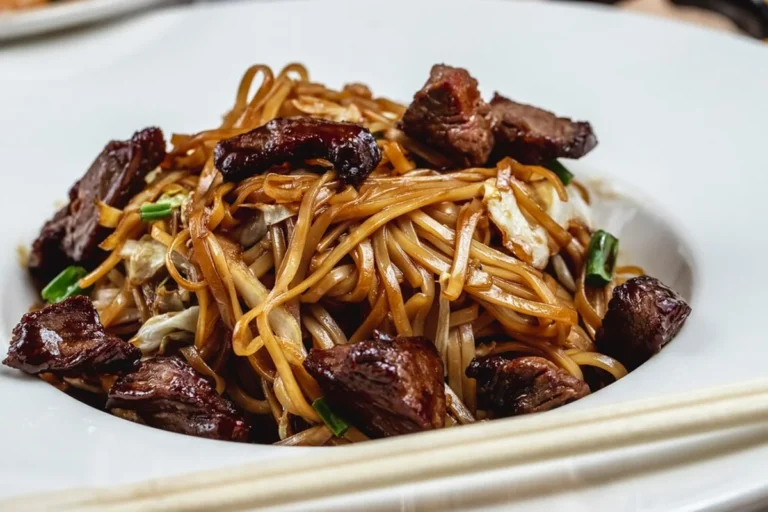
Authentic Vietnamese Beef Stew with Egg Noodles
Bò Kho is a hearty, flavorful Vietnamese beef stew that combines tender braised beef with aromatic spices like cinnamon, star anise, and lemongrass. Served with egg noodles, this dish is rich in flavors and textures, offering a satisfying meal. The tender beef and thick broth, infused with spices, create a delightful balance, while the egg noodles soak up the delicious stew. Whether enjoyed as a warming dinner or shared with friends, bò kho is a comforting dish that captures the essence of Vietnamese comfort food.
- Total Time: 2 hours 20 minutes
- Yield: 4 servings 1x
Ingredients
- 1.5 pounds (680g) beef stew meat (chuck or brisket), cut into 1-inch cubes
- 2 tablespoons vegetable oil
- 1 onion, chopped
- 2 carrots, sliced
- 4 cloves garlic, minced
- 2 stalks lemongrass, bruised and tied in a knot
- 2–3 star anise
- 1 cinnamon stick
- 2 tablespoons curry powder
- 4 cups beef broth
- 1 tablespoon fish sauce
- 1 tablespoon soy sauce
- 1 tablespoon sugar
- 2 tablespoons tomato paste
- 1 tablespoon ginger, minced
- 2 cups egg noodles (or your choice of noodles)
- Fresh herbs (Thai basil, cilantro) for garnish
- Lime wedges (for serving)
- Optional chili slices for garnish
Instructions
- Brown the beef: In a large pot, heat the vegetable oil over medium-high heat. Brown the beef cubes in batches, ensuring each side gets a nice sear. Remove the beef and set it aside.
- Cook the aromatics: In the same pot, add the chopped onion and garlic. Sauté for 2-3 minutes until fragrant.
- Simmer the stew: Return the beef to the pot. Add the carrots, lemongrass, star anise, cinnamon stick, curry powder, and ginger. Pour in the beef broth, fish sauce, soy sauce, and sugar. Stir well and bring to a boil.
- Slow cook: Lower the heat to a simmer and cover. Let the stew cook for about 2 hours, or until the beef is tender and the flavors are fully developed. Adjust the seasoning as needed.
- Prepare the noodles: While the stew simmers, cook the egg noodles according to the package instructions. Drain and set aside.
- Assemble the dish: Once the beef stew is ready, remove the lemongrass, star anise, and cinnamon stick. Serve the stew over the cooked egg noodles, and garnish with fresh herbs, lime wedges, and optional chili slices.
- Serve: Enjoy the flavorful Vietnamese beef stew with egg noodles immediately!
Notes
- For an extra depth of flavor, allow the stew to cool, then refrigerate it overnight. Reheat and serve the next day for even better taste.
- Adjust the spice level by adding more or fewer chili slices, depending on your preference.
- If you prefer a gluten-free version, substitute rice noodles for egg noodles.
- Prep Time: 20 minutes
- Cook Time: 2 hours
- Category: Dinner
Nutrition
- Serving Size: 1 bowl (approx. 1.5 cups stew with noodles)
- Calories: 480
- Sugar: 5g
- Sodium: 1000mg
- Fat: 22g
- Saturated Fat: 5g
- Unsaturated Fat: 5g
- Carbohydrates: 45g
- Fiber: 4g
- Protein: 30g
- Cholesterol: 85mg
Keywords: Vietnamese beef stew, bò kho, beef stew with egg noodles, Bò Kho recipe, Vietnamese noodle soup, egg noodles, Vietnamese comfort food, beef stew, pho with noodles, Vietnamese stew recipe
You’ll also like
- Banana Bread Recipe with 2 Bananas
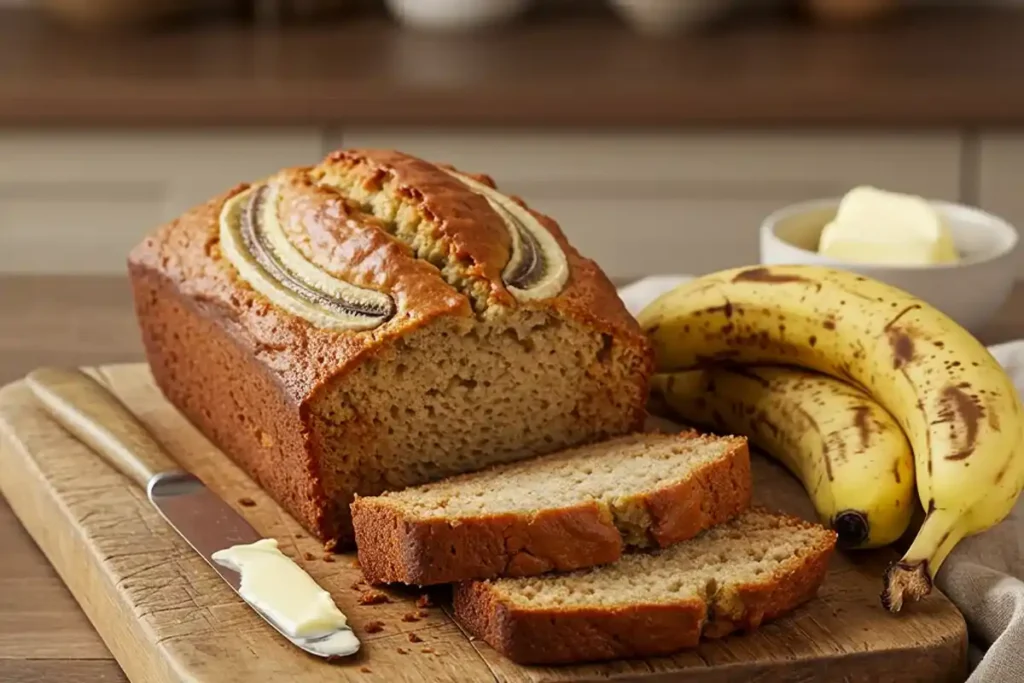
- Delicious Churro Cheesecake Bars Recipe – Easy Dessert Delight!
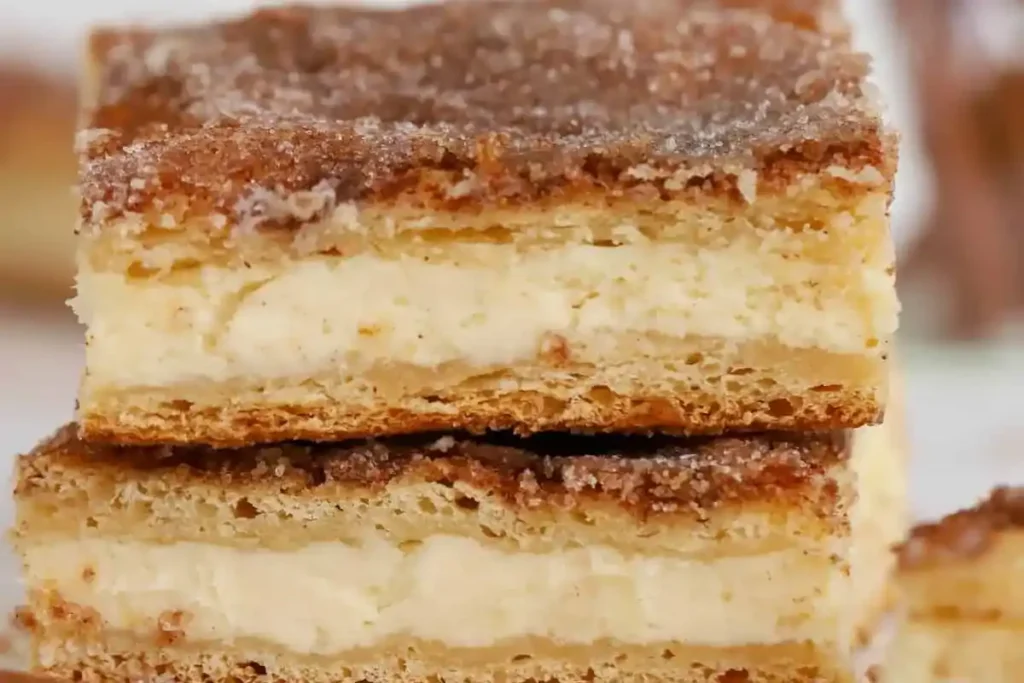
- Sure Jell Recipes: How to Make Perfect Jams & Jellies
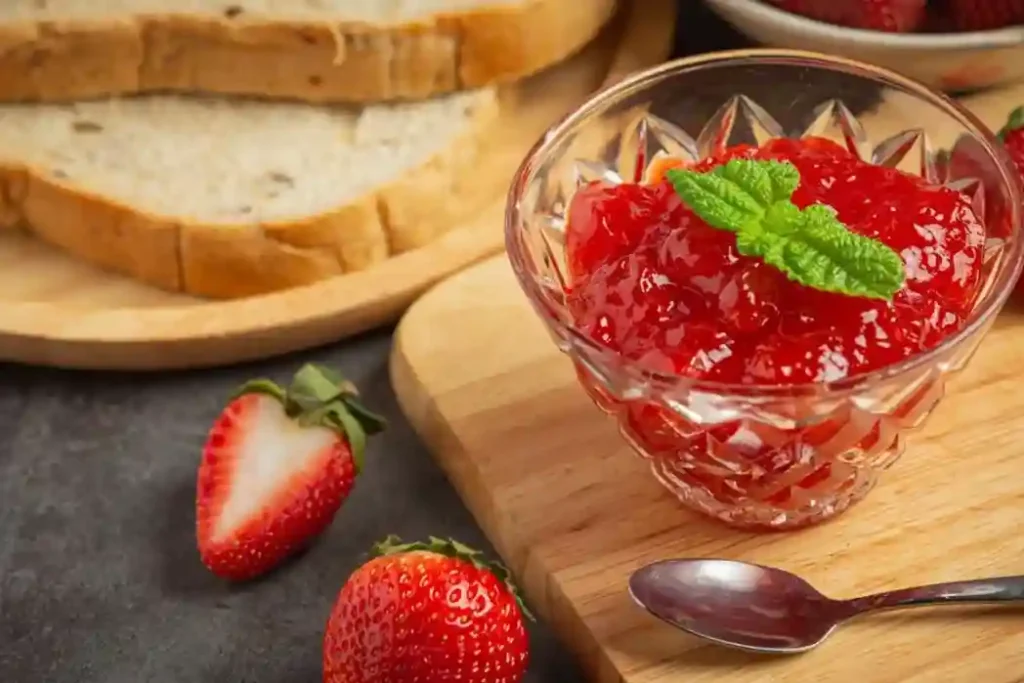
- Delicious Steelhead Trout Recipe: A Flavorful Guide

- Ultimate Peach Crumble Recipe: Sweet & Crunchy Delight
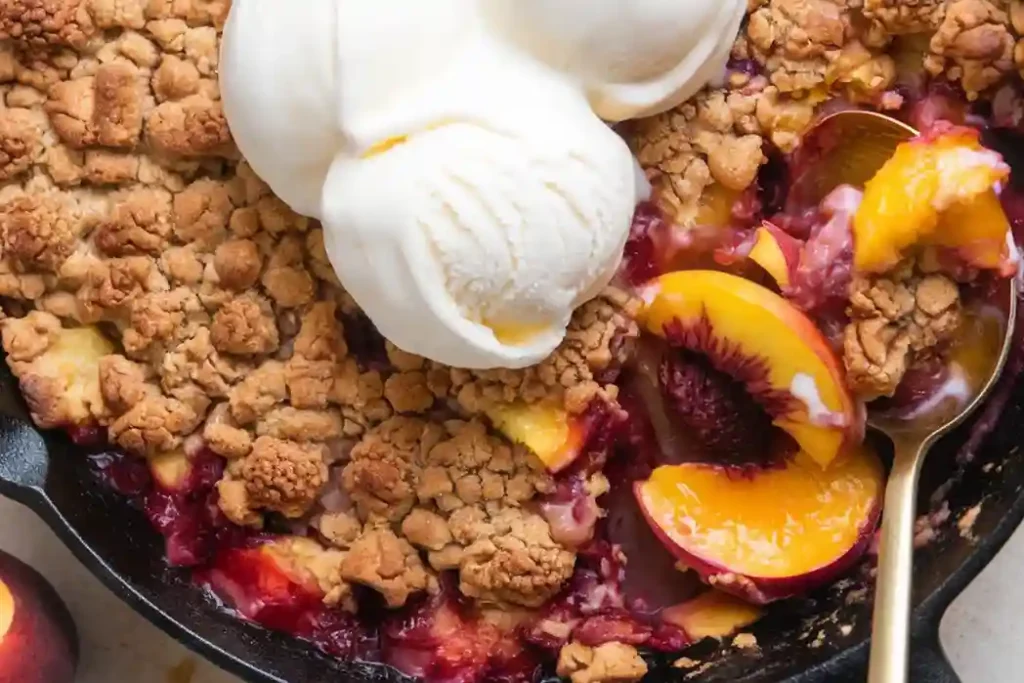
- Easy Step-by-Step Brioche Loaf Recipe for Perfect Breakfast Bread

